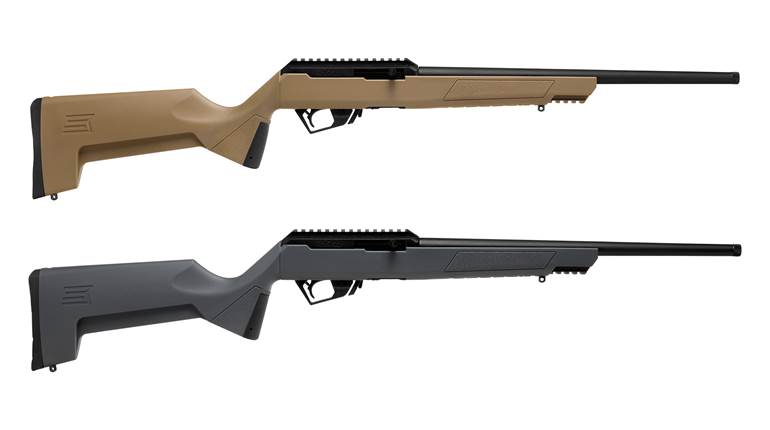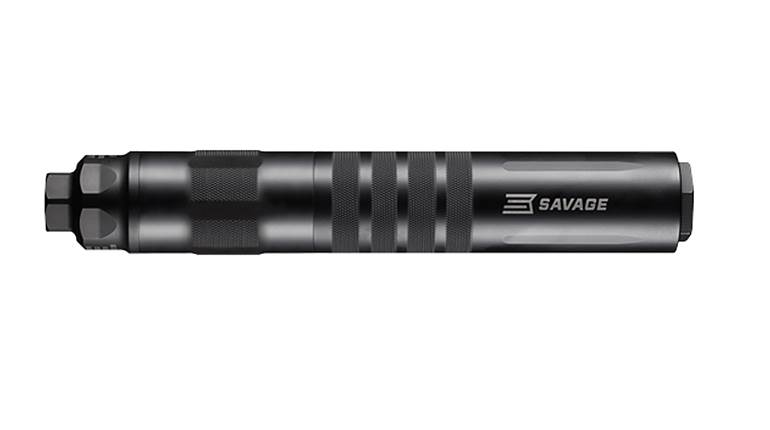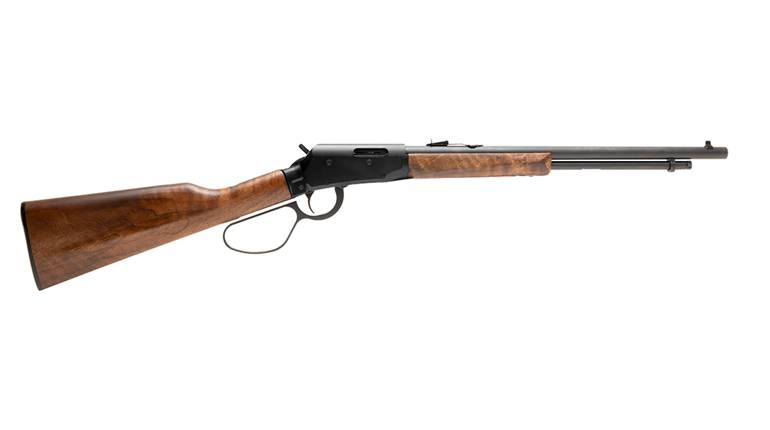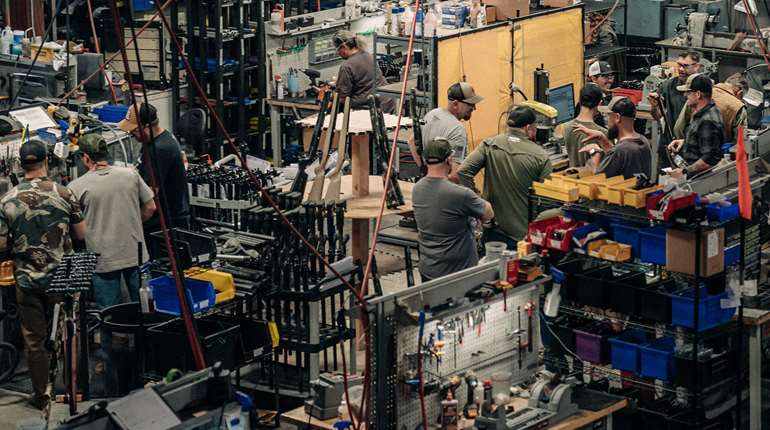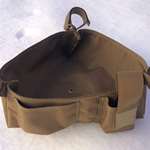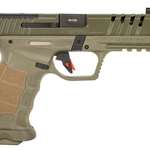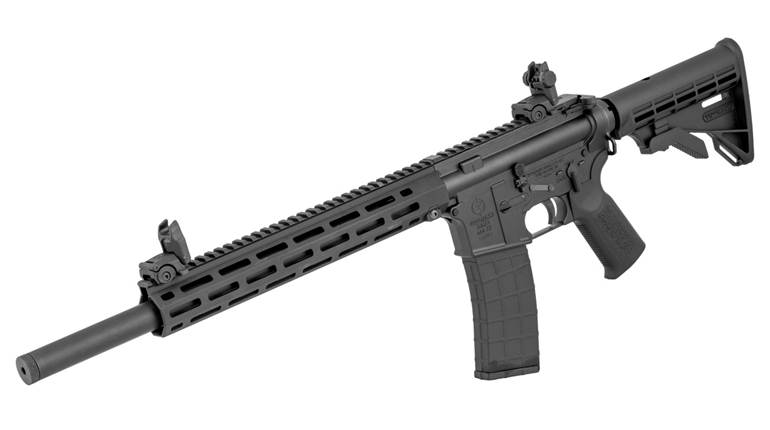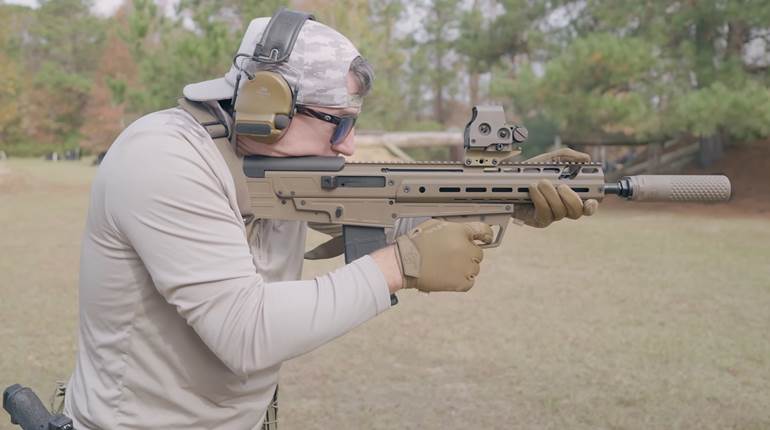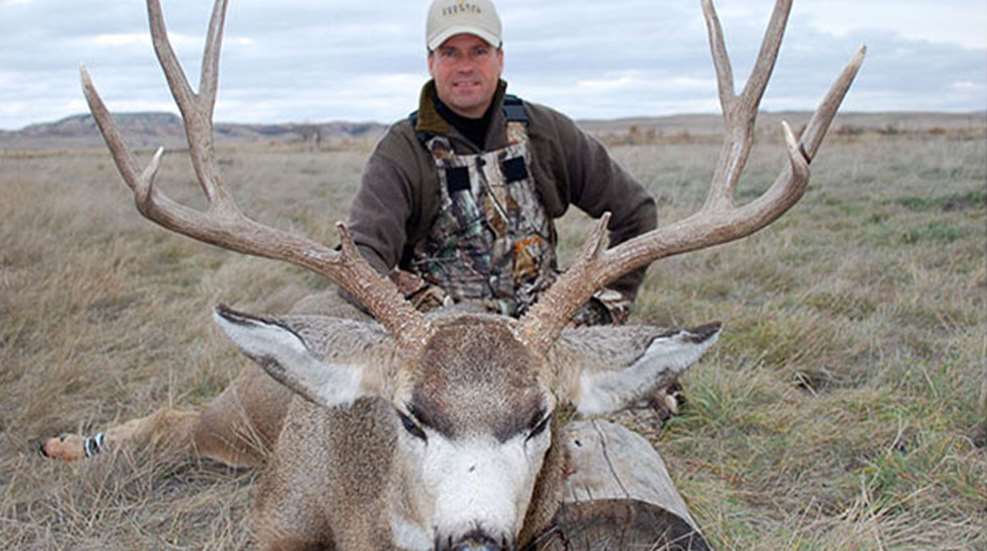
A major development in shooting and hunting business occurred Feb. 9 when Vista Outdoor Inc., completed a “spin-off” from its former corporate parent, Alliant Techsystems (ATK). Under the leadership of former ATK CEO Mark DeYoung (shown above and below), Vista now owns some 30 outdoor brands that formerly comprised the ATK Sporting Group including such well-known firms as Federal Premium Ammunition, Savage Arms, Bushnell, Blackhawk!, Primos, RCBS, Outers, Gold Tip Arrows and Champion Target. In addition to shooting and hunting brands, the new company also operates in other outdoor recreational categories, such as golf, skiing, mountaineering, camping, and wildlife watching. As such, Vista emerges as the biggest company in the outdoor recreation sector.
The spin-off was actually ancillary to an even bigger financial move, that being the merger of ATK and Orbital Sciences Corp., two major entities in defense and aerospace contracting. The resulting corporation, Orbital ATK, represents a $4.5 billion (annual sales) economic engine.
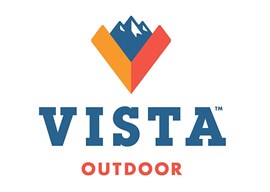 Aside from how the moves will impact shooting and hunting customers, an interesting factor in this is DeYoung’s role. Though instrumental in orchestrating the multi-billion-dollar merger, he chose to go with the considerably smaller spin-off group, which will be headquartered in his home state of Utah. However, for those of us who got to know Mark DeYoung when he was president of ATK Federal in the early 2000s, the pieces certainly fit. He’s a keen shooter, hunter and outdoorsman, a family man who is known for making time to hunt with his sons. Having DeYoung back in a position devoted exclusively to creating and marketing great shooting hunting and outdoor products is a good thing.
Aside from how the moves will impact shooting and hunting customers, an interesting factor in this is DeYoung’s role. Though instrumental in orchestrating the multi-billion-dollar merger, he chose to go with the considerably smaller spin-off group, which will be headquartered in his home state of Utah. However, for those of us who got to know Mark DeYoung when he was president of ATK Federal in the early 2000s, the pieces certainly fit. He’s a keen shooter, hunter and outdoorsman, a family man who is known for making time to hunt with his sons. Having DeYoung back in a position devoted exclusively to creating and marketing great shooting hunting and outdoor products is a good thing.
For a closer look, NRA Publications engaged Mr. DeYoung in a one-on-one conversation about what shooters and hunters can expect from the new company in terms of operating its brands, developing new products and providing leadership in promoting shooting sports and supporting firearm freedom and hunters’ rights. 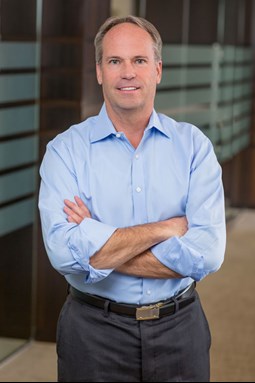
Beyond changes in stock ownership, in the corporate portfolio and upper management structure, how will the shooting and hunting public notice or be affected by the transition to Vista Outdoor? How does this go beyond a rebranding?
The real key here is how this goes beyond branding. Vista Outdoor now has its own executive leadership team empowered with its own balance sheet, its own board and its own investors. It’s a very flexible and financially strong company, and we are going to be able to make strategic decisions, drive innovative product solutions and pursue ways to grow and expand the portfolio in ways the Sporting Group under ATK was not able to. I think this will create value for investors; but for consumers, for your readers, it means there’s dedicated company with 100 percent of its management 100 percent focused on this market. In the previous structure, I had to allocate limited resources between aerospace, defense and sporting, between the next commercial airliner, the next missile program, next space rocket launch. Instead I will be waking up every day thinking about strengthening this company, which will be the world’s largest independent individual outdoor recreation company. We will be about $2.3 billion (in annual sales), so much larger than anyone else in this space and our focus will be on continuing to grow and produce great products.
We're sure the name Vista Outdoor was very carefully selected. What does that name signify to customers of Federal Premium, Savage, Bushnell and all the other brands?
Vista is aspirational. It allows us to think about what’s over the next hill, what’s coming over the horizon. We are going to be forward-looking, not simply content to operate in an area we know well, but always looking for other opportunities for our consumers as well as our investors and employees.
Vista is a broad definition that allows us to go into a lot of different markets. When we thought about Vista Outdoor, we wanted to make sure it communicated a broad view of the outdoor recreation industry. Right now in our portfolio, we have Bolle ski helmets and goggles and other winter sports equipment. We have golf products, the number-one market-share golf rangefinder, technology recognized by 97 percent of PGA players who know the Bushnell brand. We are very strong in that niche. We’ll also continue to focus on broad outdoor recreation categories like camping, mountaineering, trail sports, and wildlife watching. We’ve identified a market which is $63 billion (annually) in the United States alone, individual outdoor recreation products where Vista either has a leadership presence or we have a brand or capability or distribution channel to allow us to expand. That’s our strategy.
Although we will be diverse, we want NRA members to know we remain very committed and dedicated to the shooting sports. In no way will this diminish nor deplete our focus on shooting sports, hunting and supporting the Second Amendment. We’ve done a good job demonstrating our commitment there and that will not change at all. We have a shooting sports segment that is 100 percent dedicated to shooting sports. It will always be a core part of Vista Outdoor.
In the foreseeable future, are there plans for consolidation of manufacturing or other facilities? What factors could prompt such moves?
Since I got into this business in 2002, we’ve had a concept, a focus on being forward looking, a strategy called Factory of the Future. When ammunition demand outpaced supply, our competitors were building brick-and-mortar buildings or talking about building new factories. We grew our market share over that last five years significantly and increased our ammunition delivery significantly and built no factories because we have a different mentality. We have a factory of the future mentality where, for the last decade, we invest every year in automating and upgrading our equipment, making sure we can produce more on the equipment that we have, replacing old machines that are inefficient or ineffective. The great thing about this for Vista is that it is not going to result in any big consolidations in our manufacturing footprint. We’re not going to change any major locations where we currently do business. We’ve already done consolidations, like closing the Onalaska (Wisconsin) plant where cleaning products were made. But this isn’t an event that will make us look at how we do business any differently.
One favorable note to NRA members is that many (if not a majority) of Vista Outdoor products are American-made. Is that important to company leaders and will that continue to be the case?
We value our manufacturing base in America and there will not be any significant shift in how we manage our made-in-America strategy or our manufacturing footprint. You know that most of our ammunition is made in Idaho and Minnesota. Most of Savage Arms’ line is made in Massachusetts. We are going to stick with that. We are focused on maintaining that kind of manufacturing capability. The Lake City product we sell will continue to be manufactured in Missouri outside Kansas City, and we’ll continue to distribute Lake City products to the consumer market so that relationship stays in place. Primos, for example, is a Mississippi company, they do much of their own work there. We do manufacturing in Utah for Gold Tip arrows. Some of our business today is sourced; a lot of optics sold the United States are sourced. We will continue to drive that strategy to create value and economy for our employees but there isn’t going to be an overarching strategy to outsource more work.
With so many brands under one corporate awning, is it possible to maintain individual brand energy and identity? We've seen others in our sector struggle with that, so how will Vista avoid the pitfall?
This is a big challenge for a company that is a house of brands, a lot of brands. We have 30 brands, 21 product categories where we are number 1 or number 2 in the market, so we have a huge portfolio with strong leadership positions and we do not want to compromise that, obviously. However, I would say that in ATK’s past we have made mistakes with a few of our brands or product lines and we’ve learned from that. I am very adamant that I want entrepreneurs in our brands and in our product lines. We must have product managers who wake up every day and think about their products and their brand, whether it’s Bushnell or Gold Tip Arrows or Federal Premium Ammunition or Savage Arms. I want people waking up every day not worrying about what the company is doing, but about their own product-centric strategies and solutions. We are organizing in a way that we will have product managers, marketing managers and executive leaders that are brand-centric, product line-centric. That is an investment we’re making so we don’t create a “vanilla” strategy. We don’t feel like we have to consolidate all of our brands into the same factories, and I don’t feel like we must have all of our leadership team across all the brands and segments sitting with me in Utah. Our dispersed leadership teams will be in locations where we are designing and developing product. That will be our approach to ensure we do not lose the entrepreneur spirit. The Primos boys, Will and Jimmy, I want them in Mississippi thinking about Primos products every day, and I want the Bushnell boys in Overland Park, Kansas, waking up every day going to work thinking about their lines, and the Federal guys in Anoka, Minnesota, focused on ammo. So we are going to put in place a concerted effort, as well as investment and organization structure, that I believe can drive a big company like this and still allow people be close enough to their brands and their marketing.
Can it be beneficial to have engineers and product developers from separate brands share ideas and work together on innovating new products? Conversely, is there a downside to doing so?
We are going to let people focus on their own product lines and brands, so optics guys should think about optics, ammo … ammo, guns … guns, but as you can see with the Savage A17, we put ammunition people together with firearms designers and solved an extraction/feeding problem common to semi-auto .17 HMR rifles, a problem that no company had been able to solve. We managed it by putting our ammo people with our gun people. Because we had both and were committed to finding a solution, we came up with a design that is very difficult to make, to get the delayed blow-back timing exactly right. We solved this because we used cross-product-line pollination to get a solution. That is a good example of how we can let ammo people drive ammo solutions and gun people drive gun solutions, but when it makes sense, like in this case, bring together the right kind of resources, talent and investments to solve “unsolvable” problems. Of course then we put on a Bushnell optic calibrated for the .17 HMR, and we created a cleaning kit from Outers for the .17 HMR, and we came out with a Blackhawk sling which was designed to complement that rifle. I think that’s a good example of how we can meet the needs of our consumers in a way no one else can. We can bring together all of that engineering, metallurgy, propellant technology, optics understanding, to create solutions, and we are going to be more focused on that approach.
Previous ownership, and you personally, have been heavily involved in shooting-industry leadership—a seat on the National Shooting Sports Foundation (NSSF) board, support for NRA and NRA-ILA, contributions to conservation and hunter organizations, etc. Since Vista Outdoor will also be making and marketing sporting goods outside the shooting/hunting sector, will such high-profile leadership continue?
Shooting sports will always be a core business for Vista Outdoor and that will remain the case even as we grow. Todd Seyfert, vice president of sales, is representing Vista on the NSSF board, mainly because I am the Chairman of the Congressional Sportsman Foundation for the next couple of years. So yes, we are chairing the Congressional Sportsman Foundation, serving on NSSF board. We are very supportive of the Second Amendment and gun-rights issues, we are very supportive of the need to ensure and communicate access to hunting lands and to recreational opportunities. We will be very committed to those causes. We are committed to giving back to the community and so will continue to work with Wounded Warriors and similar organizations to support military veterans. Our donations to those organizations will continue. As will our support of the Boys Scouts of America and 4-H Shooting, where we were one of the founding partners. You will not see us change our views or practices supporting shooting sports because we are so committed and passionate about it. That’s part of the DNA of Vista Outdoor.
No doubt that in some recreational markets, you may not have the same passion towards the Second Amendment or shooting sports as in other sectors, but I’m convinced the person who hunts in the fall and winter becomes a fisherman in the spring and summer, that the person who snow skis in the winter becomes the mountain biker in the summer. And so, I think the person involved in target shooting or hunting may become engaged in other hobbies, from golf to mountaineering to hiking and to wildlife watching. I think there is enough overlap and consumers who will pursue different outdoor interests that we can work our way through that landscape. We can be a company responsible to the needs of customers and do so in a way that we can stay committed to our values. We will do everything we can to avoid an us-vs.-them mentality in this business. We are here for everyone. Vista’s tag line is “Bringing the World Outside.” Whatever your recreational choices, we want to be your solution. I think if we do it in an ethical and responsible way as a responsible corporate citizen, we can work our way through that landscape.
With a new generation coming of age, can there be significant crossover between hunting and shooting and other outdoor recreational activities?
We think that is really key, actually. From 2009 to 2012 there were 7 million new shooters that purchased firearms and came into the sport. Two-thirds of them were 18-34 years old, a younger demographic. There has been a 37 percent increase in female shooters, and CNBC reported there was a 60 percent increase in female shooters using ranges in the last 12 months. There is an improving demographic in terms of gender participation in shooting sports. If you look at outdoor recreation sports, camping for example, it is a $7 billion industry. The average person who camps is 34 years old, they camp with friends and family, they go camping five times a year, they travel up to 200 miles to camp, will spend more on camping in 2015 than 2014. The new shooter and the camper are almost the same demographic, so there is overlap there. These industries will continue to grow because the demographic are becoming younger instead of older. We think Vista can capitalize on that crossover and can help it grow.
From a personal standpoint, you are returning to a job that's at least somewhat similar job to one you held before. What does that mean to you, and what prompted you to take this route?
This job is a little different from what I’ve done in the past because now I am the Chairman/CEO of an independent company where I can focus 100 percent on outdoor recreation markets, and that will be a very exciting role for me. It’s a few less balls to juggle in terms of strategies and customers and business practices, and I think that will improve our focus on Vista Outdoor as a company. There is a $63 billion domestic market in outdoor recreation that’s had no clear market leader. So as of this morning, Vista is the world leader in individual outdoor recreation with $63 billion of opportunities in front of us. To me that’s part of the excitement to coming to this side of the transaction instead of the merger side, and what’s interesting as well, some members Vista’s leadership team came from the executive leadership team of that $5 billion company because they see the same thing I do … they see a great value proposition, a great opportunity to grow from Vista Outdoor’s launch today and we are all passionate and engaged in various kinds of outdoor recreation. For me, it’s a rare occasion when you can marry your passion with your career. The launch of Vista Outdoor gives me the exciting opportunity to do just that.












